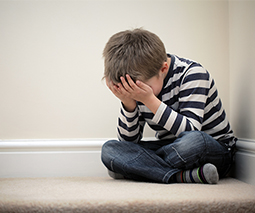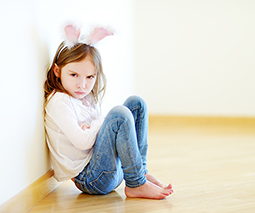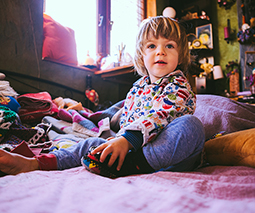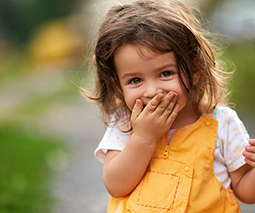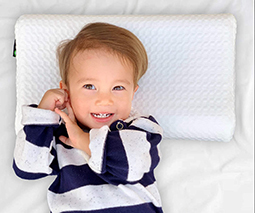Bringing a second baby home: How to teach your child to be gentle with the baby
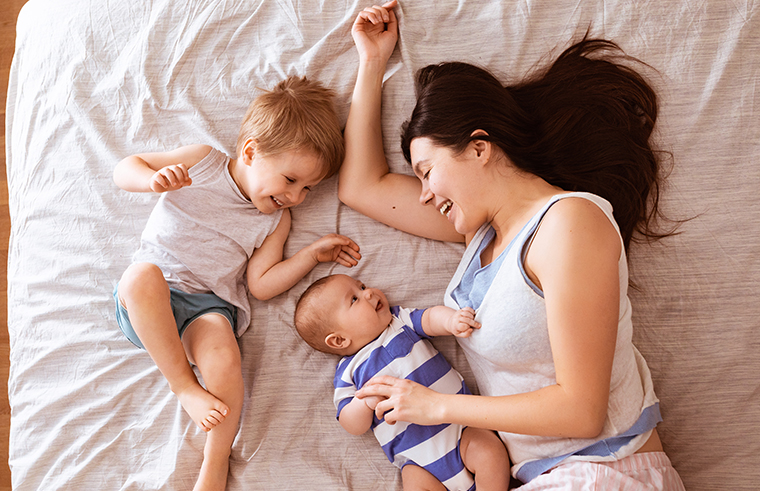
Bringing a second baby home can be a wonderful shift from tight little unit of three to a family of four. But it can also be really stressful, especially if you’ve got a very handsy toddler or preschooler who is desperate to hold the baby just like mum and dad. Or get in between the (pesky!) baby and mum and dad.
Second time’s a charm
We spoke to mothercraft nurse, Chris Minogue about this curly situation, asking her how we can teach toddlers and older children to handle the new baby with care.
Very often when a baby arrives, the second child cannot stop cuddling, lying on, basically squishing the baby. So how do you encourage them to be gentle with this new baby without sparking meltdowns and (even more) jealousy?
Listen to Chris Minogue on Feed Play Love
Chris says it’s important to ensure that children are educated about the new baby from the moment they meet them and this can stop the sort of acting-out that has parents worrying about the newborn getting hurt.
“I’d do that in hospital, so I don’t wait till we get home. Try and make it as normal as possible,” Chris says. “That this is just an extension of a family. So if they come into the room and mum’s feeding the baby at that point, don’t put the baby down because that’s not going to happen at home.”
“I’d continue to feed, but I might get that child to sit up on the bed or on the couch with them if they’re able to. I’d explain what I’m doing; ‘This is Baby Jack and Mummy’s feeding baby Jack. I do that every couple of hours. But once I’m finished, I can read you a book.’ So you’re setting the expectation up in a really small way.”
This low-key approach can pay huge dividends when it comes to settling a new baby in.
“You’ve got to make it as normal as possible from the very beginning. If that baby’s in the little baby bed when that child comes in to the hospital, then give the toddler a cuddle, take them over to the baby, say ‘Here’s baby Jack and when baby Jack wakes up, we can have a look at baby Jack’. So from the very beginning, when they walk in the door, there’s nothing special,” Chris stresses.
“You have to actually make it flow from that point and then we don’t get too much of that jealous behaviour. ”

Quality baby-toddler time
Chris also notes that toddlers really need dedicated time to get to know their baby sibling and that giving them some special opportunities to do that without getting in trouble can head some problems off at the pass.
“Once I finish feeding that baby, I actually lay the baby down because by then little toddlers are just curious as to what a baby is,” she explains.
“If the only thing they hear about the babies ‘No! Don’t! Stop!’ well, there’s nothing better than going to get or do the thing that’s ‘No! Don’t! Stop!'”
Chris suggests lying the baby down and supervising your toddler as they get to know them. Let your toddler touch the baby’s hands and feet. Talk to them about the baby’s cord clip telling them ‘That’s where they were attached to Mummy’.
“The only thing I protect is their head,” Chris explains. “So once they go for their head, I would take their hand and say ‘gentle, we’re doing gentle patting’. So I’m not making [the baby] an object of ‘no’ or ‘don’t’ or ‘you can’t’. I’m [saying] ‘this is part of our family and we can touch the baby’.”
Chris says that once kids are given an opportunity to find out what their sibling looks like, feels like and sounds like (even smells or tastes like!) they tend to stop obsessing quite so much.
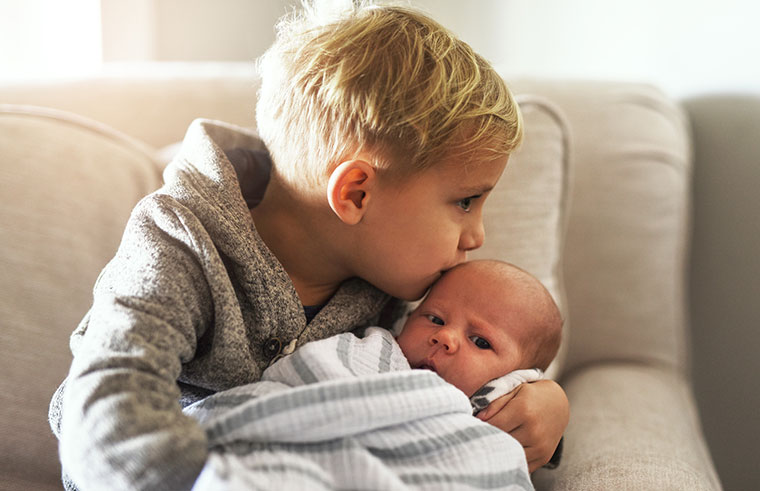
“Would you like a cuddle?”
Some children will relish holding their baby sibling and this is something you can help your child to do safely.
“We say, ‘Would you like a cuddle?’ and get them to [sit down and] cross their legs, then put the baby in their lap.”
Chris recommends remaining close by because these ‘holds’ are often very short-lived and littlies are often eager to hand the baby back.
She also believes it’s important not to give a sleeping baby to a small child to hold, even if they ask for a cuddle.
“I would say ‘well, the baby sleeping at the moment, but after the sleep, you can have a cuddle’,” Chris suggests.
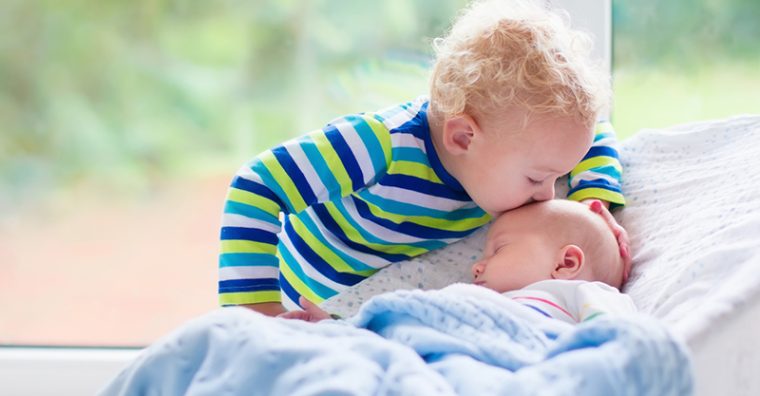
The six week blip
That said, sometimes littlies can get off to a great start and then slowly it dawns on them that this baby is sticking around. Then they get a little bit antsy and show some of those rough or combative behaviours.
“A lot of children, six weeks down the track, show signs of jealousy,” Chris says. “They’ll often say ‘ I hold the baby’ or ‘Give the baby to me’, because they’ve learned that when they hold the baby, they get lots of attention. ‘Isn’t that cute?’ ‘You look so adorable.’ ‘You’re the big brother.'”
Sound familiar? This is when things can sometimes begin to escalate.
“What they do is then start squeezing them. I call it ‘loving them to death’. And then it might turn into a little pinch or a little nibble on the ear. They can’t quite organise their emotions. So then just take the baby away and say ‘We’ll have a little cuddle a little bit later on’.”
Keeping things relaxed and making sure that your newborn becomes part of the furniture rather than something to obsess over is key to helping your older child adjust.
“Putting them down on the mat, laying around the baby, letting that child lay around is going to make the baby more familiar to that child and allow them to adjust to this new little baby coming into their life,” Chris sums up.

